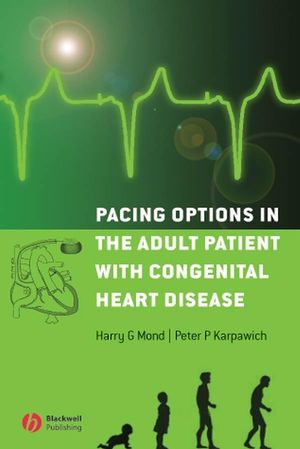Pacing Options in the Adult Patient with Congenital Heart DiseaseISBN: 978-1-4051-5569-4
Hardcover
144 pages
December 2006, Wiley-Blackwell
 |
||||||
1 Know the anatomy.
2 Transvenous pacemaker implantation.
3 The pulse generator or ICD pocket.
4 Epicardial or epimyocardial pacing.
5 Problems with right ventricular apical pacing.
6 What type of lead fixation device do I use?.
7 Consider steerable stylets or catheters.
8 Safety in numbers – the belt and braces technique.
9 Do old leads need extraction?.
10 Stenosed venous channels.
11 Use of the coronary venous system.
12 Consider growth in teenagers.
Part 2 Patients, principles and problems.
Section A No previous cardiac surgery: pacemaker/ICD required.
13 Congenital atrioventricular block.
14 Congenitally corrected L-transposition of the great vessels.
15 Congenital long QT syndromes.
Section B No previous cardiac surgery: pacemaker/ICD a challenge.
16 Atrial septal defects and patent foramen ovale.
17 Persistent left superior vena cava.
18 Dextrocardia.
19 Ebstein’s anomaly.
Section C Previous corrective or palliative cardiac surgery.
20 D-Transposition of the great vessels.
21 Septal defects including tetralogy of fallot.
22 Repaired Ebstein’s anomaly.
Section D No venous access to ventricle.
23 Univentricular heart.
Concluding remarks.
References.
Index



